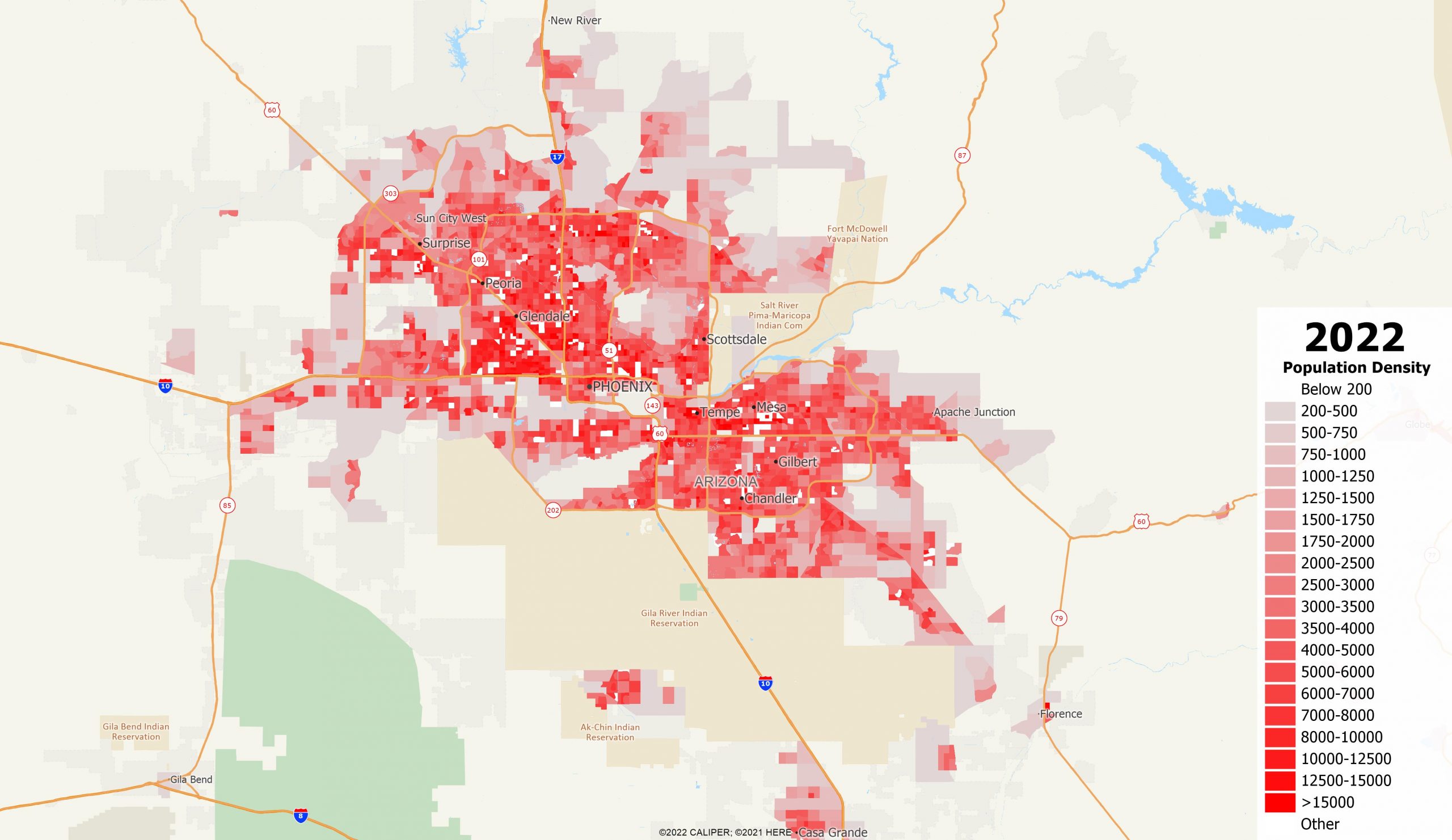This year, Super Bowl LVII will be held in Glendale, Arizona in the Phoenix metropolitan area. This will actually be the fourth Super Bowl held in the Phoenix area and the third in Glendale at State Farm Stadium. This vibrant metropolitan area has seen major growth over the last few decades, but what makes Phoenix unique?
In 1912 when Arizona became a state, Phoenix became the state capital. In 1920, Phoenix saw its first skyscraper, and in that decade their population doubled. Today, the Phoenix metropolitan area is the 11th largest metro area in the U.S. with nearly 5 million residents and a growth rate of nearly 375% from 1970-2022. The maps below demonstrate how the area has grown over the last 50 years and expanded to include cities around the center of Phoenix, including cities like Glendale.

1970 Population

2022 Population
Looking deeper into the demographics, Phoenix is home to young, diverse, and educated individuals. The median age is nearly 2 years younger than the national average for metro areas, and diversity is 20% higher than the average and 20% of the population over the age of 25 holds a bachelor’s degree. Because of the recent growth, it isn’t surprising that the houses are also young, as the median home age is only 19 years old, compared to the national average of 32 years old. Along with the added diversity, twice as many people as the national average don’t speak English, and there are twice as many bilingual households.
With all of the growth, companies have expanded in to the Phoenix area and the top occupations by percentage are in management, sales, office administration, construction and retail. Top companies to work for include PetSmart, Banner Health, U-Haul and more.
Of course, the NFL chose Glendale as the Super Bowl host city for all that it has to offer demographically, but also in terms of weather. Phoenix rarely sees any significant weather related natural disasters, or even many rainy days. And with no snow in sight, the game can be played on a warm field without disruptions from mother nature. Because the NFL chooses host cities with favorable weather conditions and enclosed fields, it won’t be shocking to see Phoenix back in the rotation as a Super Bowl host city in the coming years.


Recent Comments